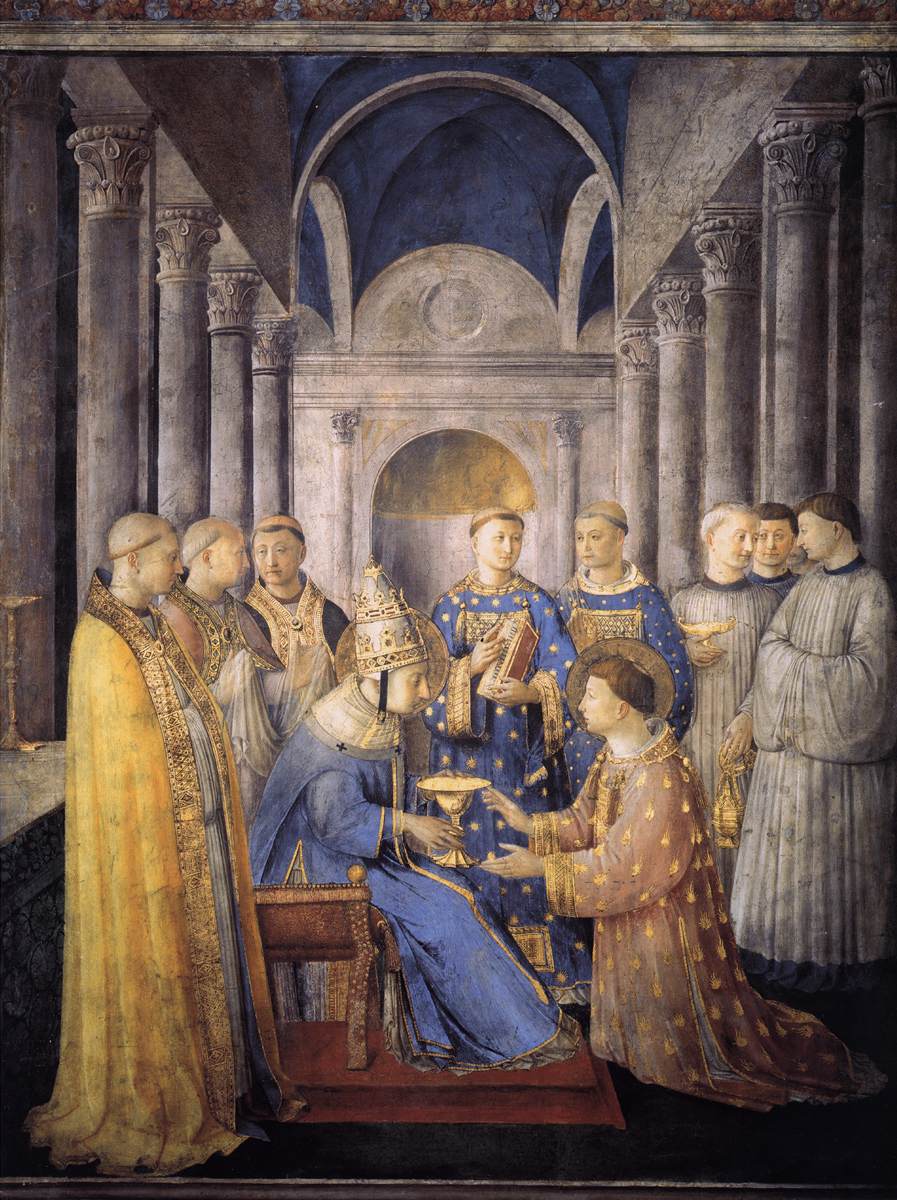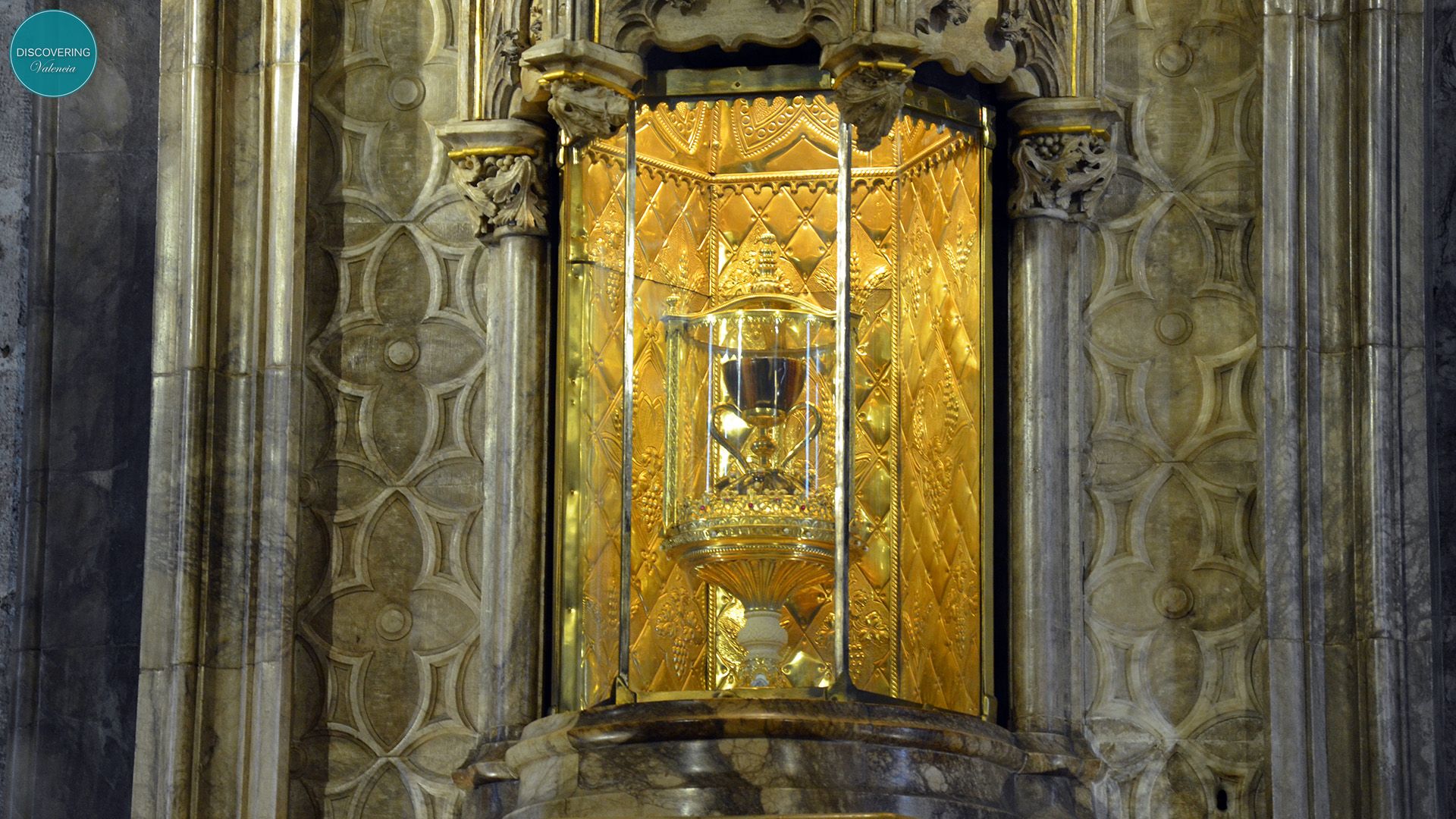Lost in Translation #142
“The most striking phenomenon in the Roman text,” writes Josef Jungmann, “is the augmentation of the words of consecration said over the chalice.” [1]
We may organize these augmentations that are in the Simili modo into two admittedly subjective categories: not surprising and surprising.
Not Surprising
Under the category of “not surprising,” I place the following:
Sanctas ac venerábiles manus suas and benedixit. It is not surprising that Christ’s hands are described as “holy and venerable”, since this same loving description is in the prayer for consecrating the host. Nor is it surprising that the prayer states that Christ “blessed” the chalice before consecrating the wine (a detail not mentioned in the New Testament), since the same thing is said in the earlier consecration as well.
Novi et æterni testamenti. To the term “New Covenant,” the prayer adds “and eternal.” The addition was probably inspired by Hebrews 13, 20-21:
And may the God of peace, who brought again from the dead the great pastor of the sheep, our Lord Jesus Christ, in the blood of the everlasting testament, fit you in all goodness, that you may do His will.
The fusion is apt. Not all covenants last forever. The covenant with Moses (and its obligation to follow the Mosaic Law) has run its course, and the covenant with David was fulfilled when the Son of God was born from his line. The New Covenant wrought in Christ’s Blood, on the other hand, is eternal and irrevocable. It is the covenant to end all covenants.
Praeclarum. The Simili modo calls the chalice praeclarus or excellent, most likely in imitation of Psalm 22, 5, which the Douay Rheims translates as:
Thou hast prepared a table before me against them that afflict me. Thou hast anointed my head with oil; and my chalice which inebriateth me, how goodly (praeclarus) is it!
Like that of “holy and venerable,” the addition of “excellent” shows a tender love for Christ and everything to do with Him; as Jungmann puts it, “the pathos hitherto suppressed breaks through in a single word.” [2] But there is also a logic to the addition. Chalices are indeed excellent or resplendent, not simply because they are normally made out of precious metals (“out of reverence for the sacrament,” Aquinas explains) [3] but because they hold, like the Sacred Heart of Jesus, His Most Precious Blood. Or as Peter Kwasniewski writes, the word praeclarus “has both a causative and explanatory force” – causative in the sense that the chalice becomes excellent through the consecration of the wine, explanatory in the sense that it explains why we make such a fuss in the manufacture and care of the chalice. [4]
Together with the Qui pridie, the Simili modo thus has a marvelous synthetic quality in that it weaves together several strands of salvation history. In this respect it is an excellent example of what we have elsewhere called spiritual eructation. Michael Fiedrowicz concludes:
Thus, as if from many pieces of a mosaic, the text of the Canon came into being, whose harmonious overall image no longer reveals the original variety of its ancestry. [5]
Rubrics
Like the Qui pridie prayed over the host, the Simili modo is a perfect isomorphism of word and deed. When the priest says that Christ took the chalice into His hands, he takes the chalice into his hands; when he says “again giving You thanks,” he bows his head in gratitude; and when he says “He blessed it,” he blesses the chalice. This highpoint of the Mass is a powerful dramatization of the doctrine that the priest celebrating Mass acts in persona Christi.
And like the Qui pridie, the Simili modo has a subtle epicletic dimension, in so far as it involves insufflation or ritual breathing. In order to pronounce “H” in the first word (Hic), the priest must produce a strong burst of breath. And since his mouth is inches away from the chalice, his breath moves over the water and wine like the Spirit moved over the face of the waters at Creation. (Gen. 1, 2). As an MC, I have been privileged to hear the priest’s breathy voice echo off the sides of the chalice as he pronounces the Words of Institution. And again like the Qui pridie, this Spirit moment is further reinforced by the priest’s hovering over the chalice, much like the overshadowing of the Holy Spirit during the Annunciation. (Luke 1, 35)
Surprising
The Simili modo contains at least two surprising elements.
Hunc. The use of the demonstrative pronoun hic to describe the chalice is astonishing. There is no other translation for this word than “this,” as if to suggest that the chalice that the priest is holding is the same chalice that Our Lord held during the Last Supper. And the rubrics do not distance themselves from this interpretation but double down on it. When the priest says “this chalice,” he takes it in his hands and lifts it a little, as if to say, “this here chalice.”
Sorry, Indy
The most fascinating theory about this curious passage is that it corroborates the claim that, thanks to Saint Peter and his disciple Saint Mark (who hosted the Last Supper), the Church of Rome was in possession of the Holy Grail, the chalice used by Christ at the Last Supper. And since the Holy Grail was used during Pontifical Masses, the Pope could hold it in his hands during the Canon and say with complete truthfulness, “this chalice.”
Pope Saint Sixtus, Saint Lawrence, and the Holy Grail
That is, until A.D. 258. When Pope Sixtus II knew that he was going to be martyred and that the prefect of Rome was trying to confiscate the Church’s wealth, he entrusted the Grail to St. Lawrence (as a deacon he would have had a special relationship to the chalice away). Lawrence, also knowing of his impending death, gave it to a friend, the Spanish soldier Proselius, to give to his parents in Huesca, Spain. Today the Holy Grail is believed to be venerated in a special chapel in the cathedral of Valencia in Spain. [6] Both Popes St. John Paul II and Benedict XVI celebrated Mass with this precious relic when they visited Valencia. I hope they used the Roman Canon.
The Holy Grail in Valencia, Spain
Besides this tantalizing historical hypothesis, there is much to ponder metaphysically. “The striking phrase hunc praeclarum calicem,” writes Peter Kwasniewski, “forcefully asserts the unity of the present Mass with the one all-sufficient Sacrifice of Calvary, which the Lord anticipated in symbols on the night He was betrayed.” [7] Nicholas Gihr is more elaborate:
The identity existing between the chalice used at the Last Supper and the chalice on the altar… principally refers to the sacrificial matter therein contained, which is and must be everywhere specifically, that is, essentially the same. This identity is perfect, that is, numerically so, only after the Consecration; then there is here as there altogether the same Blood in both chalices: “This is the chalice of My Blood.” [8]
To these considerations we may add that the use of “this” highlights the priest acting in persona Christi and heightens a sense of immediacy, where the tissues of space and time melt in the sunshine of an eternal event. For although the priest is still referring to Christ in the third personal singular, in the use of “this” it is as if the Voice of the High Priest Himself is breaking through, just as It does when the words are uttered, “This is My Body” and “This is the chalice of My Blood.”
Next week, we examine the greatest surprise of all in the Roman Canon.
Notes
[1] Jungmann, vol. 2, 199.
[2] Ibid.
[3] Thomas Aquinas, Summa Theologiae III.83.4.ad 6.
[4] Peter Kwasniewski, The Roman Canon: Pillar and Ground of the Roman Rite, The Once and Future Roman Rite (TAN, 2022), 240.
[5] Michael Fiedrowicz, The Traditional Latin Mass, 279.
[6] Janice Bennett, St. Laurence and the Holy Grail: The Story of the Holy Grail of Valencia (San Francisco: Ignatius Press, 2004).
[7] Kwasniewski, 239.
[8] Gihr, 639.




